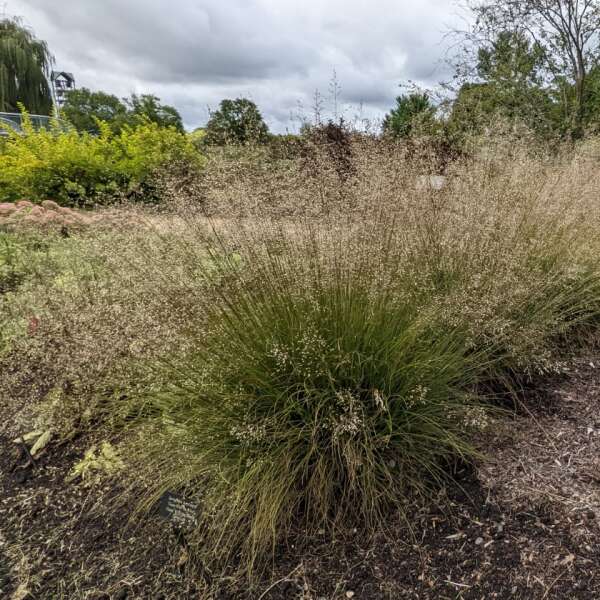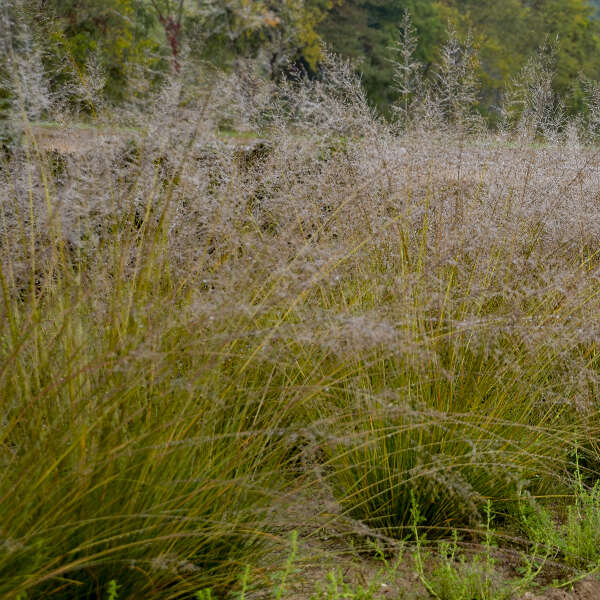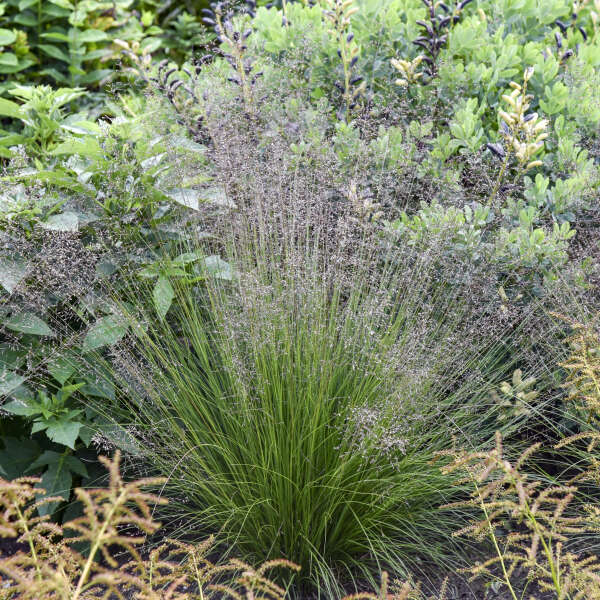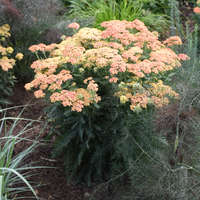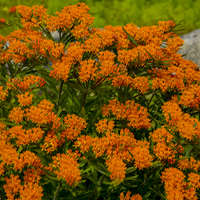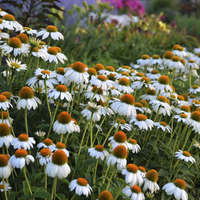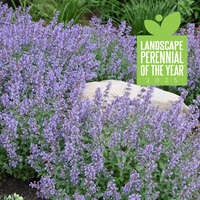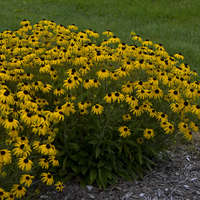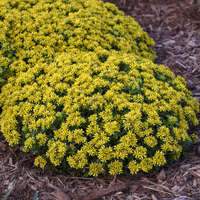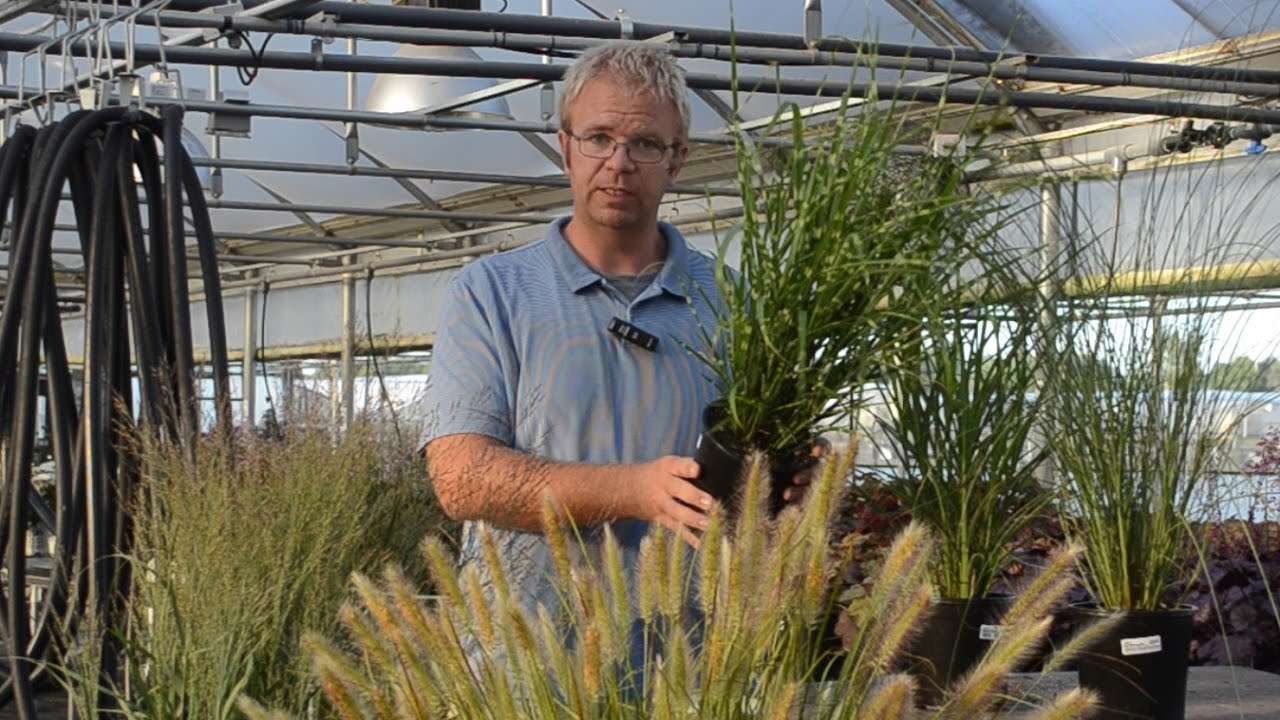Sporobolus heterolepis 'Gone With The Wind'

Common Name: Prairie Dropseed, Ornamental Grass
This is a new seed strain of the native grass known for its hair-like foliage and mass planting appeal. 'Gone with the Wind' is shorter than the species, but still maintains many of the characteristics that made this type of grass popular. Its short, green foliage is topped by wispy, airy and aromatic tan flower panicles. The plant, as the name suggests, gently sways with the wind, creating unique movement in the garden. Foliage takes on red overtones in late fall.
This grass is very heat and drought tolerant because it is deep rooted. It is often planted en masse as a groundcover or as a specimen.
Prairie Dropseed is native to North American prairies and occurs naturally from Canada to Texas. Much of it has been destroyed by overgrazing and farming, so now it is only found in undisturbed prairies. Native Americans once used its seeds to make flour. This plant gets its name from the way the tiny mature seeds drop to the ground in the fall. Birds and other wildlife depend on this plant as a nutritious food source.
30ct Plug Tray |
